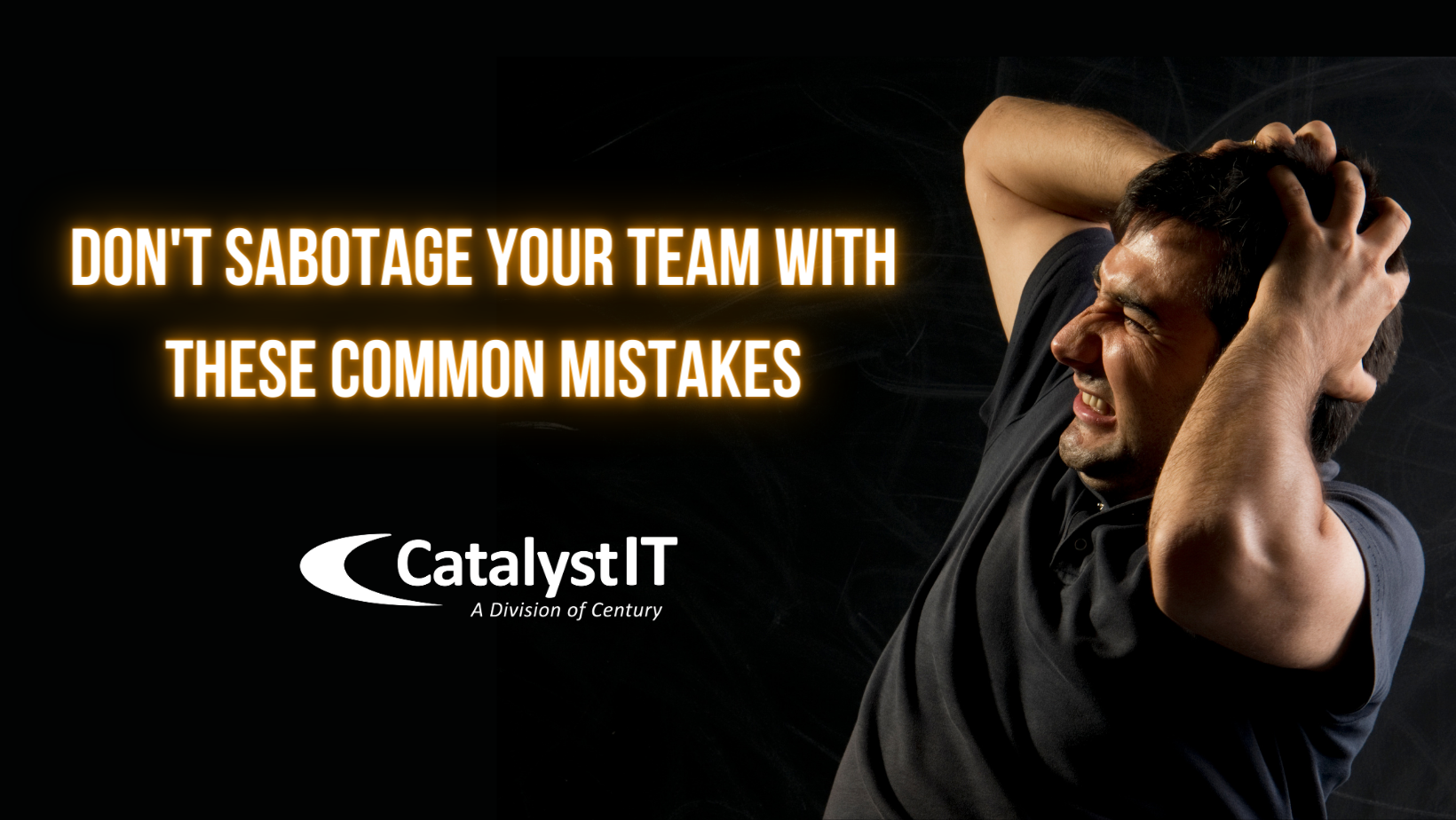Don’t Sabotage Your Team with These Common Mistakes

Employee cybersecurity training is as crucial today as it always has been. It acts as the frontline defense against cyberattacks, empowering your workforce to identify and mitigate potential threats. However, to ensure the effectiveness of your training program, you should take all the steps necessary to avoid common mistakes that can undermine your efforts.
Let’s uncover these pitfalls and learn how to steer clear of them. By addressing challenges head-on, you can maximize the impact of your employee cybersecurity training.
Stay proactive and informed to create a culture of security awareness that empowers employees as vigilant defenders against cybercrime. Don’t sabotage your team and its cybersecurity training with these common mistakes.
Mistakes to Avoid
These preventable mistakes can hinder your cybersecurity initiatives:
Approaching security training as a one-off activity
Don’t treat cybersecurity training as a mere checkbox exercise. Instead, foster a culture of continuous learning by providing regular opportunities for your employees to stay updated on the latest threats and security best practices. Make security awareness an ongoing journey rather than a one-time event.
Delivering dull, outdated and unrelatable training
Engagement is vital to proper training. Avoid dry and obsolete content that fails to capture your employees’ attention. Instead, strive to provide training that is timely, engaging and relatable. Leverage interactive platforms and user-friendly tools to create an immersive learning experience that resonates with your team. Technology moves fast and that means that training gets outdated quickly. Make sure to consistently revamp and refresh your training.
Creating a culture of blame and distrust
Approach security training as an opportunity for growth and improvement rather than a blame game. Foster a supportive environment where employees feel comfortable reporting security concerns and asking questions. Encourage a sense of collective responsibility, emphasizing that cybersecurity is everyone’s job.
Lack of support and participation from leadership
Leadership plays a crucial role in setting the tone for your security training program. Without visible support and active participation from executives and managers, employees may perceive security as a low priority. Encourage leadership to champion security initiatives and actively engage in training, showcasing their commitment to protecting the organization. Be the change you want to see.
Not seeking help when needed
Developing and managing a comprehensive training program can be challenging, especially with limited internal resources. Don’t hesitate to seek assistance from external experts or IT service providers specializing in cybersecurity training. They can provide the expertise and guidance needed to implement a robust and effective program.
Partner to Succeed
By overcoming these pitfalls, as mentioned above, you can establish a strong security culture within your organization. If you think you need support, then don’t wait. Don’t sabotage your team. We’re here for you. Our experience and expertise are exactly what you need to turn the tide. With our experts on your side, security training will be the last thing you need to worry about.
Want to hear more on outsourced IT? You’re in the right place. Contact Catalyst IT today for Proactive IT Management.


